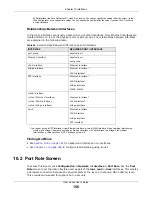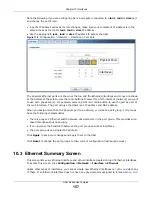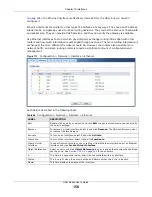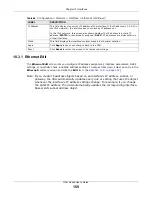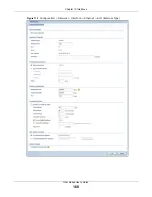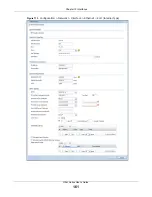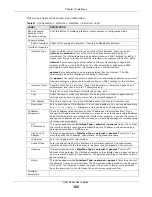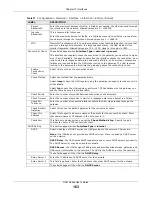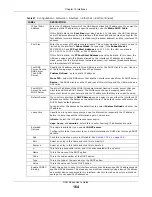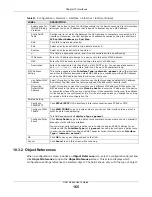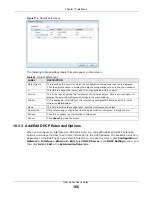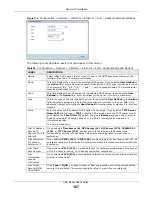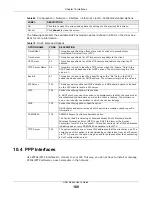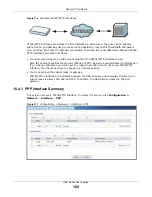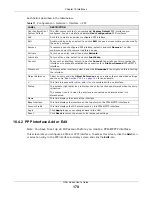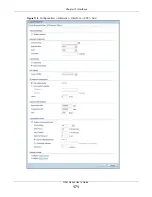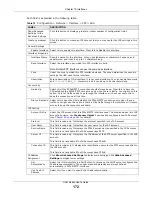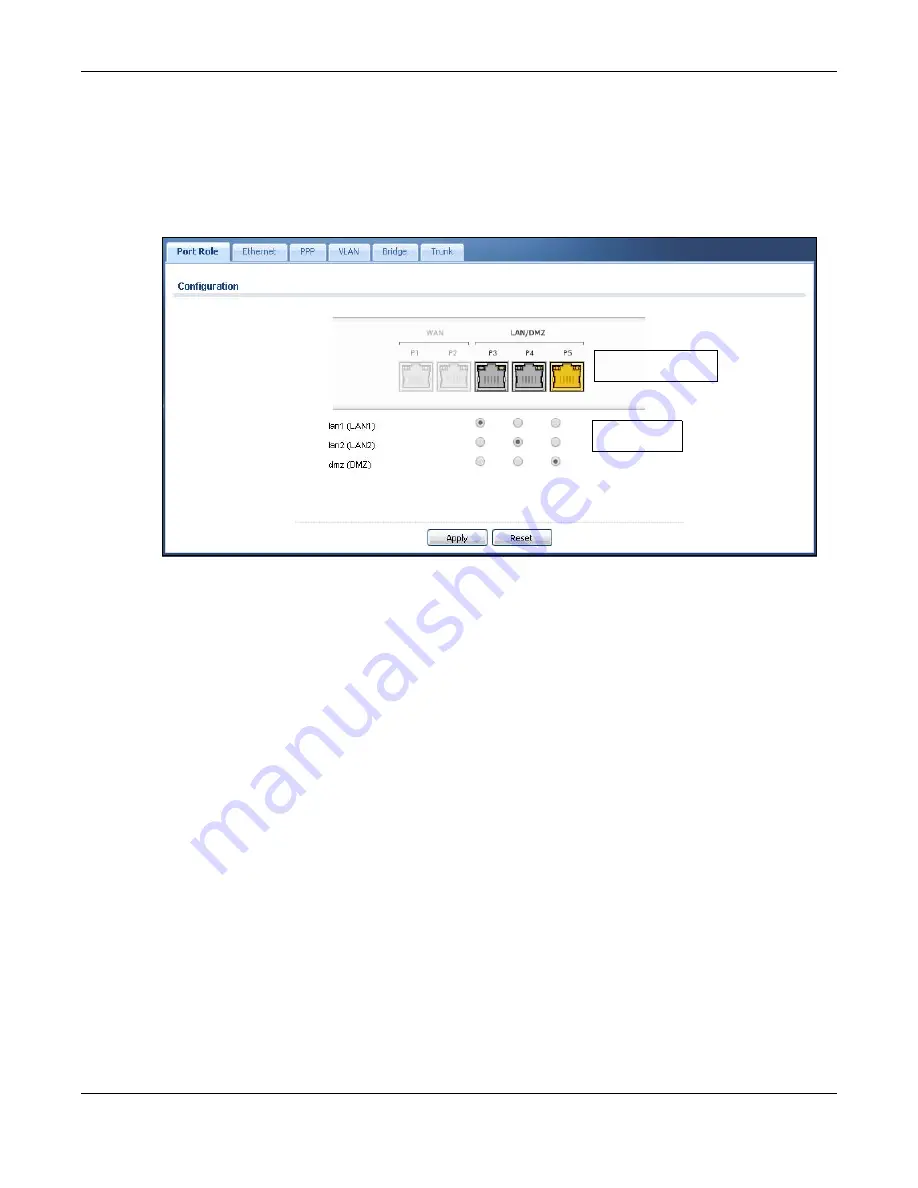
Chapter 10 Interfaces
UAG Series User’s Guide
157
Note the following if you are configuring from a computer connected to a
lan1
,
lan2
or
dmz
port
and change the port's role:
• A port's IP address varies as its role changes, make sure your computer's IP address is in the
same subnet as the UAG's
lan1
,
lan2
or
dmz
IP address.
• Use the appropriate
lan1
,
lan2
or
dmz
IP address to access the UAG.
Figure 110
Configuration > Network > Interface > Port Role
The physical Ethernet ports are shown at the top and the Ethernet interfaces and zones are shown
at the bottom of the screen. Use the radio buttons to select for which interface (network) you want
to use each physical port. For example, select a port’s lan1 radio button to use the port as part of
the lan1 interface. The port will use the UAG’s lan1 IP address and MAC address.
When you assign more than one physical port to a network, you create a port group. Port groups
have the following characteristics:
• There is a layer-2 Ethernet switch between physical ports in the port group. This provides wire-
speed throughput but no security.
• It can increase the bandwidth between the port group and other interfaces.
• The port group uses a single MAC address.
Click
Apply
to save your changes and apply them to the UAG.
Click
Reset
to change the port groups to their current configuration (last-saved values).
10.3 Ethernet Summary Screen
This screen lists every Ethernet interface and virtual interface created on top of Ethernet interfaces.
To access this screen, click
Configuration > Network
>
Interface > Ethernet
.
Unlike other types of interfaces, you cannot create new Ethernet interfaces nor can you delete any
of them. If an Ethernet interface does not have any physical ports assigned to it (see
Physical Ports
Interfaces














